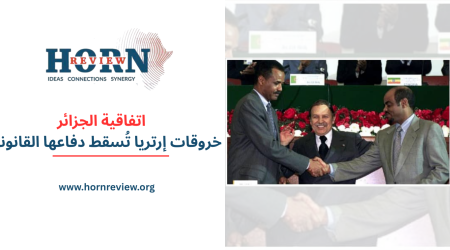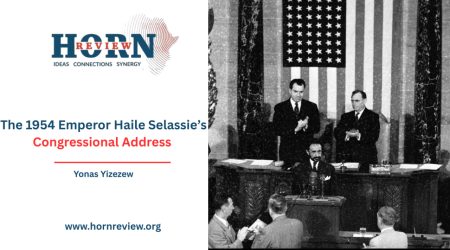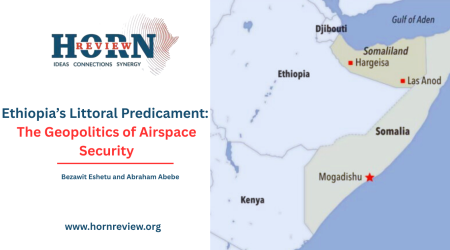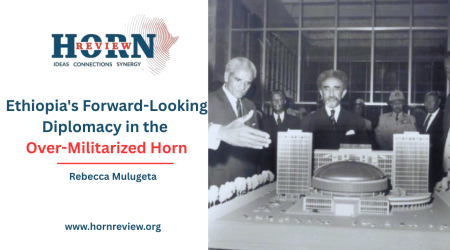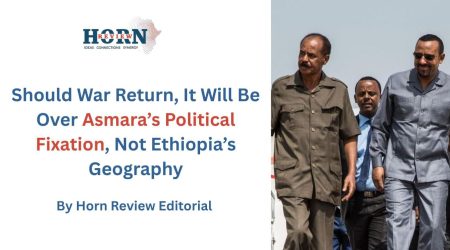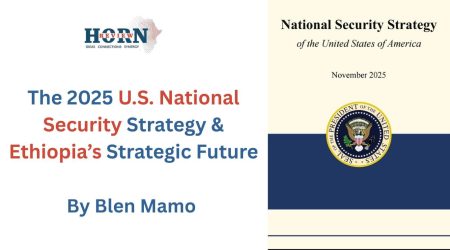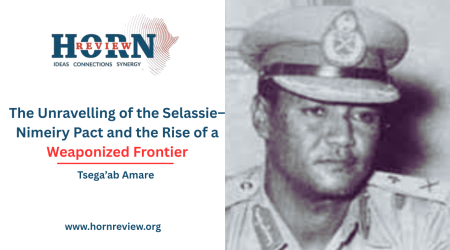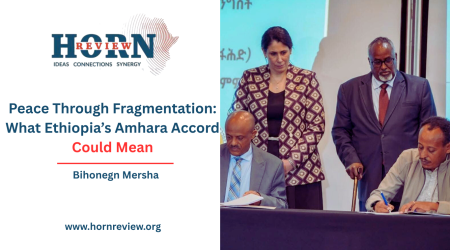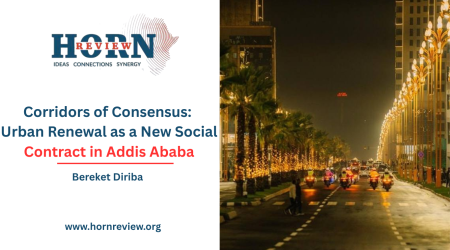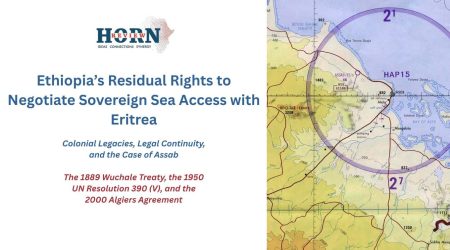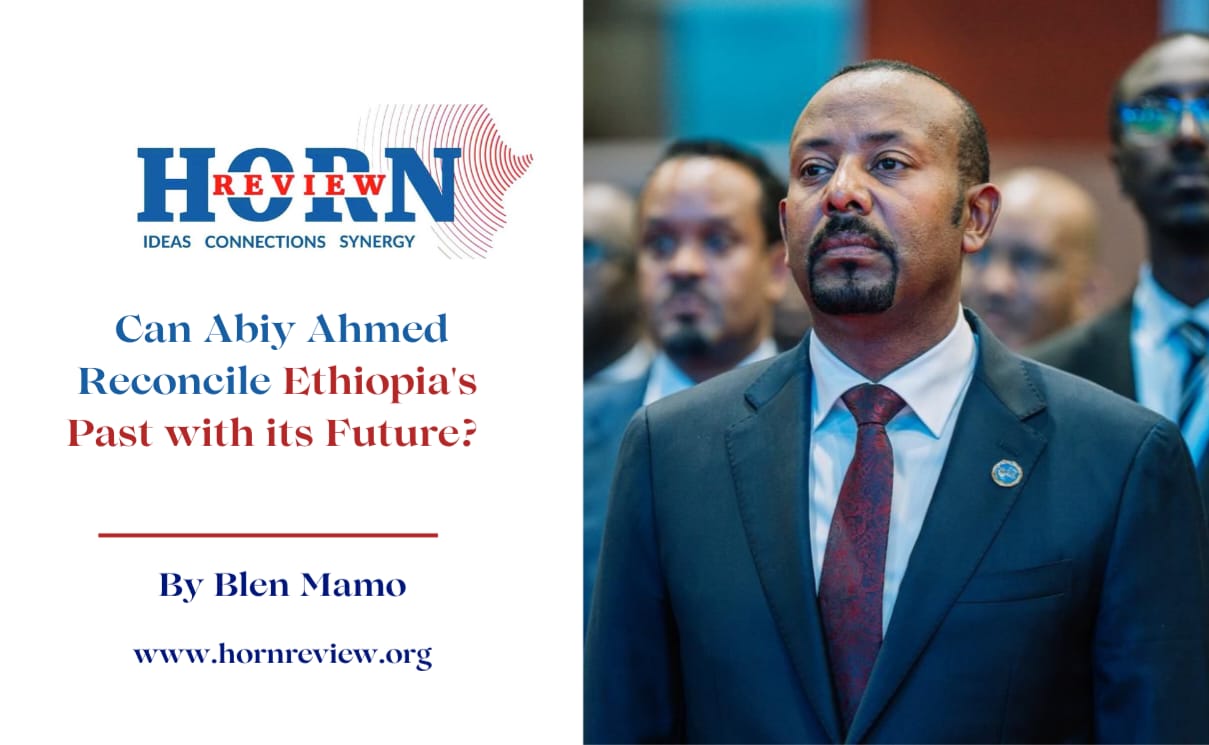
29
Oct
Can Abiy Ahmed Reconcile Ethiopia’s Past with its Future?
By Blen Mamo
Ethiopia, a nation poised between the weight of its past and the promise of its future, stands at a critical historical and political juncture. Its highly debated prime minister navigates a complex terrain defined by the tension between poverty and prosperity, political chaos and stability, regional rivalry and integration, the pursuit of a just global order versus exposure to injustice, and the challenges of consolidating power amid centrifugal pressures.
When Abiy Ahmed assumed office in 2018, he inherited a country whose sovereignty and territorial integrity had long been tested, both internally and externally. In the wake of the monarchy’s fall and the turbulent transition from empire to republic, Ethiopia remained haunted by unresolved historical dilemmas: the heavy toll of the student revolutions, the scars of the Derg era, the persistent tension between imperial legacies and republican governance, and the contentious secession of Eritrea, through which the nation lost its coastline without a nationally legitimate or consensual process. Leading scholars and thinkers had been eradicated, borders were contested and redrawn, and institutions were fragile, repeatedly reshaped, and often functionally incoherent.
Many institutions had to be literally rebuilt from the ashes of past failures, reflecting both systemic decay and determined efforts at reconstruction. Perhaps most pressing was a generation whose ethnic consciousness frequently outweighed civic understanding of nationhood, creating a society in which many felt alienated from the state while others asserted exclusive ownership. These challenges were compounded by entrenched corruption, authoritarian habits, and a privatized approach to state power, producing a formidable landscape for any leadership to navigate.
It was into this fraught landscape that Abiy Ahmed emerged – a largely unknown but strategically positioned insider turned into an unexpected figure at once. Prior to 2018, few outside the upper echelons of the then ruling EPRDF party had heard of him. Alongside political peers in the OPDO, ANDM, and SEPDM, he steered the long-awaited political change that led to his appointment as the chairperson of the EPRDF & subsequently, the prime minister of the Federal Democratic Republic of Ethiopia. Public speculation had centered on figures such as Lemma Megersa and Demeke Mekonnen, making Abiy’s selection a procedural surprise rather than a popularly anticipated outcome. His inaugural gestures – including repeated invocation of “Ethiopia” and a conspicuous appeal to national symbolism – marked a rhetorical departure from the cautious, post-Derg lexicon of prior leaders. His rise, while welcomed by many, disrupted the equilibrium within the TPLF and other EPRDF components, and it recalibrated expectations among domestic and external actors – including political elites, bureaucratic networks, intellectual circles, and foreign state and non-state actors – whose interests had long been embedded in the existing configuration of power.
Although often dismissed by observers who misread or underestimate him, Abiy emerged as a political actor with a defined sense of direction and a long-standing clarity of purpose that extends beyond personal ambition to the architecture of the Ethiopian state. He operates within a highly complex political and historical environment, and his trajectory reflects both individual positioning and the constraints of institutional and societal structures. He demonstrates a working comprehension of Ethiopia’s historical strata – imperial and republican inheritances, social cleavages, and the incentive structures governing elite behavior. He occupies a position that is simultaneously peripheral and central, allowing him to navigate competing constituencies without stable ownership by any single faction. His political maneuvers rely on procedural and strategic mechanisms rather than coercive force, with an orientation toward long-term state objectives: reconfiguring Ethiopia’s domestic political economy and asserting its regional and international agency. This trajectory is less the product of personal charisma than the systematic exploitation of structural opportunities and constraints within Ethiopia’s fraught political landscape.
From the outset, Abiy Ahmed confronted entrenched institutional resistance, particularly from the TPLF, whose multi-decade monopoly over the military and security apparatus systematically constrained the operational capacity of the nascent administration. Within months, the government faced coordinated destabilization: an assassination attempt in June 2018, fiscal incapacitation through depleted treasury resources, deliberate destruction of intelligence archives, and a militarily compromised command structure. Bureaucratic institutions remained fragile, while ethno-religious violence and targeted massacres emerged, reflecting the activation of TPLF-affiliated networks to divert attention from state governance. At the strategic level, the TPLF engaged in a suite of extralegal maneuvers to erode federal authority: relocating to Mekelle, conducting unauthorized regional elections, establishing parallel administrative structures, seizing entrenched northern military assets, and restricting the mobility of federal forces. Concurrently, the TPLF sought to undermine Abiy’s political legitimacy within the discourse of competing ethno-nationalisms: Oromo and Tigrayan ethnonationalists accused him of centralizing unitarism, whereas Amhara ethnonationalist factions framed him as an Oromo ethnic partisan. Entrenched political networks exploited institutional fragility, historical grievances, and ethnic cleavages to contest state authority under Abiy’s leadership.
The ethnic conflicts and intra-religious disputes witnessed then across Ethiopia were also not merely spontaneous expressions of localized grievances. Rather, they were often instrumentally produced by political elites experiencing declining influence, who mobilize militias as proxy actors to generate instability while subsequently positioning themselves as guarantors of order. These engineered dynamics compound the structural challenges confronting the federal government, constraining policy implementation and complicating efforts to advance Abiy’s broader reform agenda. The interaction between elite maneuvering, institutional fragility, and socially embedded cleavages resulted in the persistent tension between governance objectives and the incentives of entrenched actors in Tigray, Amhara, Oromia, Somali region and elsewhere in the country.
Yet, despite the entrenched structural and political constraints, the prime minister has advanced a strategic framework oriented toward Ethiopia’s autonomous development. His policies combine efforts to achieve food and defense self-sufficiency with state-directed investment and selective macroeconomic liberalization, anchored by an entrepreneur-state model in which locally generated revenues are systematically reinvested into the national economy. Large-scale infrastructure and industrial projects, including rail corridors, airports, and energy facilities, aim to consolidate Ethiopia’s position as a continental industrial hub while reconnecting the country to its historic access to the Red Sea. Together, these initiatives reflect a long-term vision oriented toward structural resilience, economic self-reliance, and the restoration of Ethiopia’s role as a continental actor.
In the political realm, Abiy’s approach to Ethiopia’s historical inheritance has been neither revisionist nor accusatory. He has publicly acknowledged both the failures and achievements across imperial and republican eras without assigning collective blame to any ethnic community or formally endorsing ethnonationalist projects. He did not dismantle ethnic federalism, despite its centrality to contemporary political disputes, but instead pursued structural reforms that recalibrate power distribution so that groups historically dominant at the center and those previously confined to peripheral administration participate on equal institutional terms. His reforms elevated communities traditionally distant from federal governance, shifting the national discourse away from sensational, irresolvable ethnic contention toward questions of equitable development, equal opportunity, and proportional representation within mature political frameworks. This reorientation diminished the political capital of radical ethnonational figures whose influence rested primarily on conspiracy narratives and mass agitation rather than analytical or institutional competence. Their resistance to the current order reflects the erosion of their relevance rather than the failure of reform. Under Abiy, political practice is being redirected toward professional administration and strategic governance, marking a departure from the post-Derg environment dominated by conspiratorial mobilization, and restoring aspects of the pre-Derg tradition in which political actors were expected to meet higher standards of intellectual and administrative sophistication.
The prime minister’s strategy also encompasses the systematic revival and management of historical and cultural assets. Initiatives include the restoration and refurbishment of artifacts and antiques, many originating from the imperial era, as well as the creation of monuments, museums, and heritage sites. These efforts were accompanied by the re-establishment of the Ethiopian Historians Union after a fifty-year hiatus, reflecting an intention to institutionalize historical scholarship, and transfer narrative and interpretive authority from political actors to professional academics. Collectively, these measures aim to integrate historical consciousness into state-building, fostering a calibrated understanding of past successes and failures as a structural foundation for national cohesion and the consolidation of institutional governance.
Abiy’s maritime strategy seeks to restore Ethiopia’s historical presence in the Red Sea, from which it was effectively severed in the late twentieth century. From the Aksumite period through the modern empire, Ethiopia maintained both coastal access and naval capacity; the collapse of imperial authority and the shortcomings of subsequent regimes disrupted this continuity, inflicting enduring economic and strategic costs. The current administration’s initiatives – encompassing diplomatic engagement on Red Sea security, the reconstitution of a national navy, and the development of rail corridors linking the hinterland to maritime outlets – reflect a structural recalibration rather than an expansionist ambition. These measures, coupled with large-scale national projects aimed at positioning Ethiopia as a continental industrial hub, represent an effort to reconcile the historical loss of coastline with a forward-looking framework that leverages contemporary geopolitical and economic norms. In doing so, Abiy integrates the nation’s historical maritime significance with strategic modernization, aligning Ethiopia’s inherited strengths with the imperatives of 21st-century statecraft.
Simultaneously, his administration has further prioritized military modernization, educational reform, industrial development, and food security as pillars of state capacity and resilience. Military modernization under Abiy Ahmed has combined technological advancement, domestic defense production, and human capital development to strengthen Ethiopia’s sovereignty, operational capacity, and regional influence. Indigenous initiatives, including SkyWin Aeronautics Industries and the Homicho Ammunition Engineering Complex, produce UAVs, precision munitions, and infantry equipment, reducing dependence on foreign suppliers while enhancing operational readiness. Parallel reforms to METEC and Gafat Armament Complex improve efficiency, quality control, and sustainability, ensuring industrial ambitions translate into practical capability. These structural advances are complemented by rigorous personnel training, exemplified by repeated commando intakes, which integrate technical proficiency with strategic doctrine and enable the effective use of domestically produced systems.
Strategically, Ethiopia’s efforts extend beyond land-based defense, encompassing naval initiatives, rail-linked logistics, and dual-use civilian technologies, reflecting a holistic approach that ties military capacity to industrial growth, technological innovation, and national cohesion. Together, these measures reduce vulnerability to external pressures, strengthen deterrence, and position Ethiopia as a credible regional actor, embedding security, sovereignty, and state-building within an integrated framework of long-term resilience and autonomous governance.
Investments in education have also been broad and systematic, encompassing the design of curricula that are both state-oriented and culturally grounded, the expansion of early childhood and primary education, the enhancement of public libraries, and urban infrastructure projects that simultaneously foster civic engagement and social stability. This approach continues a legacy initially introduced during the Haile Selassie era, which later faltered for decades when curricula were insufficiently aligned with state psychology, political culture, and societal values. Abiy has sought to revive this tradition while correcting the course that previously led to failure.
Collectively, these initiatives reflect a governance strategy that integrates social cohesion with economic modernization. Complementing these efforts, environmental and community-centered programs – exemplified by the Green Legacy initiative, which mobilized millions of citizens to plant billions of trees – demonstrate a deliberate alignment of ecological foresight with socio-economic objectives, generating long-term benefits in climate resilience, agriculture, and public welfare, while reinforcing collective responsibility and national cohesion.
Agricultural modernization under Abiy Ahmed’s administration has pursued a strategy of industrialized production and structural reform aimed at maximizing output while improving the livelihoods of historically marginalized farmers. By integrating smallholder and commercial operations into coordinated systems, the state has redirected economic benefits from intermediaries and merchant classes to the farmers themselves, ensuring that they are direct participants and beneficiaries of national agricultural growth.
Recent initiatives, including the newly launched Ethiopian Investment Holdings (EIH) and Dangote Group fertiliser enterprise, aim to strengthen domestic input supply chains, increase access to high-quality fertilisers, and support mechanization, enhancing productivity and reducing dependency on imports. These investments also carry broader economic implications: they stimulate industrial capacity, generate employment, and foster technological transfer, embedding agriculture within a modern, market-oriented framework. Collectively, these reforms reflect a model in which Ethiopia’s agricultural sector is both a driver of economic modernization and a mechanism for equitable development, aligning historical agrarian potential with contemporary industrial and social imperatives—a marked departure from the past, when the nation was repeatedly cited as an example of hunger and famine due to a historical failure to appropriately utilize the fertile land and natural resources with which it is richly endowed.
Urban modernization has been a key component of Ethiopia’s broader development strategy under Abiy Ahmed, emphasizing both infrastructure and human-centered social projects. Major corridor development initiatives have improved connectivity between cities, industrial zones, and transportation hubs, facilitating trade, logistics, and regional integration. Simultaneously, the administration has invested in cultural, recreational, and educational infrastructure, including the construction and renovation of stadiums, sports complexes, and children’s centers, designed to promote civic engagement, youth development, and community cohesion. These projects not only enhance urban livability and social participation but also complement industrial and economic modernization by linking population centers to new opportunities, fostering social stability, and creating environments in which Ethiopia’s demographic potential can be fully mobilized.
Technological innovation has been a central component of Abiy’s governance strategy. The administration has deployed digital government platforms, expanded ICT infrastructure, and incorporated modern tools to enhance administrative efficiency, service delivery, and transparency. Complementary initiatives, including innovation hubs, entrepreneurship support programs, targeted ICT investments, and the National Young Coders Initiative, are designed to integrate Ethiopia into the global tech economy while simultaneously boosting domestic productivity and human capital development. A key institutional pillar of this effort is the recently established Ethiopian Artificial Intelligence Agency, which drives the modernization and digitalization of state functions, supporting data-driven governance, advanced analytics, and the automation of public services. In parallel, the government has encouraged the development of local social media platforms, modern banking systems, and digital transaction infrastructures, fostering financial inclusion, digital literacy, and citizen engagement. This technology-oriented approach reinforces broader policy objectives, facilitating evidence-based decision-making, promoting inclusive development, and expanding avenues for participation within state institutions while embedding Ethiopia more firmly in contemporary digital economies.
His administration’s diplomatic and regional strategy emphasizes citizen-centered engagement, regional and continental integration, and the expansion of Ethiopia’s global diplomatic footprint, while simultaneously maintaining and strengthening longstanding ties with traditional allies. A deliberate “increasing friends, reducing foes” approach underpins this strategy, seeking to diversify partnerships across geopolitical blocs and move beyond the historical alignments that previously constrained Ethiopia’s international agency, particularly in relation to the Middle East. Beyond conventional elite-to-elite channels, the administration has leveraged public diplomacy to demonstrate tangible benefits of international engagement for Ethiopian citizens. Early in his tenure, Abiy personally facilitated the repatriation of migrant workers using government aircraft and subsequently established legal frameworks for structured labor deployment to the Middle East, ensuring worker protection while generating national remittance flows. Regionally, Ethiopia pursued unprecedented rapprochement with neighboring states, including Eritrea, though these efforts ultimately faltered due to Eritrea’s limited diplomatic capacity and political will. By combining strategic diversification with citizen-centered diplomacy, Abiy’s foreign policy seeks to enhance Ethiopia’s sovereignty, strengthen its regional influence, and position the nation as an active, respected participant in a multipolar international order.
Ethiopia, under Abiy’s leadership, has concurrently deepened its engagement with continental and global economic initiatives, including active participation in the African Continental Free Trade Area (AfCFTA), a significant effort to secure membership in the WTO, establishment of relations with Middle Eastern powers, and expansion of ties across multiple geopolitical blocs, exemplified by the country’s BRICS membership. Strategic infrastructure and energy projects reinforce these ambitions: the recently inaugurated Grand Ethiopian Renaissance Dam (GERD) positions Ethiopia as a regional energy hub capable of integrating the Horn of Africa’s power systems, complemented by the recently inaugurated and subsequently planned oil refineries and other industrial projects. Transportation initiatives, such as the mega airport under construction in Bishoftu, the region wide rail way projects connecting Ethiopia directly to its neighbours and to the Red Sea, aim to link both Ethiopia and the African continent with international trade routes and the global markets, building on Ethiopian Airlines’, Ethiopian Railways and Ethiopian Shipping Lines decades-long legacy. Collectively, these measures reflect a multidimensional strategy in which domestic governance, regional integration, global diplomacy, and sustained traditional alliances are leveraged to enhance national sovereignty, economic resilience, and Ethiopia’s continental and international influence.
The most important factor through this all is his personal character. Abiy, as both an individual and a political actor, exhibits sustained resilience in the face of persistent structural persecutions and personal pressure, both from domestic and foreign state and non-state actors. He has withstood systematic character assassinations from domestic elites and influential Western observers, targeted sanctions, and repeated efforts to induce his resignation. Attempts to destabilize his administration proved largely ineffective. In navigating these constraints, Abiy has drawn selectively on historical precedents: appropriating Menelik’s defense of sovereignty, Haile Selassie’s diplomatic acumen, and Meles Zenawi’s strategic foresight, while consciously mitigating the limitations of each. His clarity of sense and purpose, and his methodology privileges institutional reform over episodic instability, meritocratic governance over entrenched patronage, and strategic diversification over reliance on rigid alliances, reflecting a calibrated synthesis of historical insight and contemporary statecraft that situates Ethiopia’s trajectory within both domestic and regional structural imperatives.
Nevertheless, challenges remain. Abiy’s principal vulnerabilities lie in consolidating authority and sustaining stability within a territorially expansive and ethnically pluralistic state, addressing entrenched institutional decay, and translating his long-term strategic vision into operational comprehension across bureaucracies, political cadres, and regional administrations. Although the trajectory of reform appears largely irreversible, the pace of full implementation may be protracted, as the intricacies of his overarching objectives are grasped only by a narrow inner circle, prolonging the temporal horizon for systemic transformation. Internal conflicts in Amhara, Oromia, and Tigray no longer constitute a serious threat to the central authority, yet their persistence is often instrumentalized by political elites – including some proximate to the administration – who manipulate popular sentiment, inflame tensions to safeguard or expand waning influence, or actively subvert governance for personal or factional gain.
While such orchestrated unrest complicates administrative coordination and diverts attention from broader development imperatives, it is unlikely to fundamentally alter the distribution of power or derail the trajectory of structural reform. The government must double down on its call for peace, and rigorously prioritize dialogue and sustained peacebuilding in these regions – both to safeguard citizen welfare and to fortify state sovereignty by mitigating vulnerabilities to external interference. It should be noted, however, that these internal conflicts are manifestations of the nation’s struggle with its past as it seeks to move forward, where elites and intellectuals are often divided between preserving past structures and fully abandoning them.
Throughout these challenges, the prime minister is striving to reconcile Ethiopia’s historical legacies with the imperatives of its future, a future of national cohesion and sustainable development. His tenure reflects a deliberate effort to integrate continuity and reform, suggesting that, over time, his leadership may be recognized for bridging the country’s complex past with a forward-looking national project. The structural orientation of his policies, his strategic vision and resilience has established a credible framework for advancing state capacity, consolidating governance, and enhancing regional influence. He has already laid a functional bridge between Ethiopia’s historical failures and the institutional architecture required for a more stable and prosperous future.
In this sense, Abiy’s achievements are both tangible and structurally significant. His leadership integrates historical consciousness, strategic patience, policy innovation, domestic reform, regional stewardship, and proactive international engagement. Although Ethiopia’s trajectory remains complex and contemporary assessments of his tenure are often contested and sharply critical, historical evaluation is likely to be more measured. The transition has indeed been protracted and contested, and the immediate period marked by coercive resistance, institutional fragility, and competing elite interests. Yet the reforms are now structurally irreversible. If sustained and insulated from further sabotage, their long-term trajectory has the potential to reconcile Ethiopia’s past with its future, anchoring the country’s next phase of statehood on foundations distinct from the cyclical breakdowns that characterized its previous eras.
About the Author
Blen Mamo is the Executive Director of Horn Review, an independent research and publication think-tank focused on politics, diplomacy and security in the Horn of Africa. She is also an Associate Researcher at the Ethiopian Institute of Foreign Affairs, Executive Editor of Horn Review publications, and Executive Producer of the Strategic Dialogue Podcast Series Co-Produced by the Horn Review & the Institute of Foreign Affairs. She holds an LLB, and MSc in International Security & Global Governance from the University of London.

